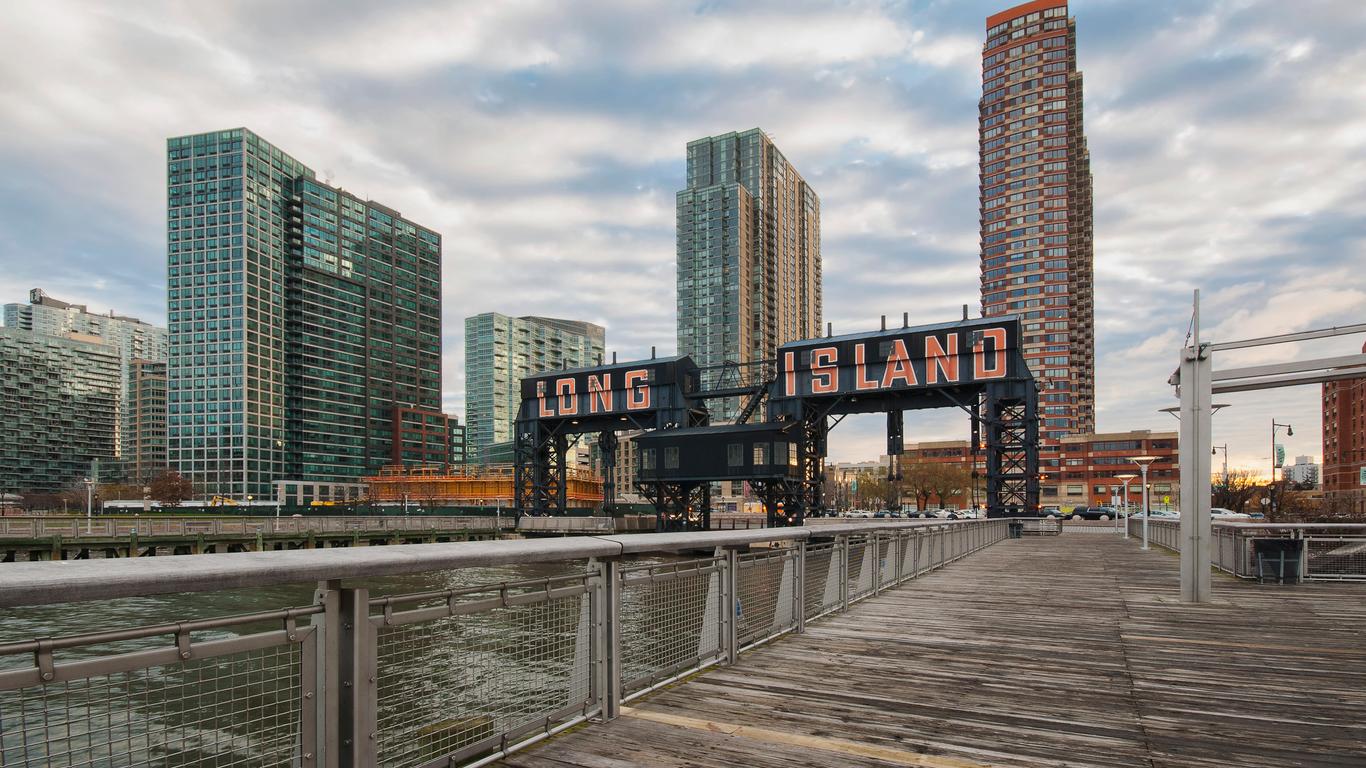A former industrial centre, Long Island City has been transformed into one of New York’s most exciting art destinations, with a high concentration of galleries, institutions and studio spaces. It’s the westernmost neighbourhood in the Queens borough, with waterfront parks sprawling along the edge of the East River and connecting to Manhattan along the Queensboro Bridge.
Industrial buildings which sprung up at the turn of the 20th century have recently been converted into cutting-edge art galleries and artist studios, which in turn have seen the development of high-end hotels, trendy restaurants and distinctive performance venues. Wealthy residents have now moved into its upscale homes and apartments, many of which offer outstanding views across towards the Manhattan skyline. Among Long Island City’s most impressive art galleries is the MoMa PS1, an innovative contemporary establishment supported by the world-class Museum of Modern Art. Set within a former public school building in over 100 different rooms, here visitors will find unique installations, performance art, and Sol LeWitt's famed Crayola Square in its basement. Also of note is the Noguchi Museum, dedicated to the work of the Japanese-American artist who once had his studio here, and combines sparse interior spaces with a tranquil pebble garden to exhibit his sculptures. The Sculpture Centre is one of the area’s most impressive exhibition spaces, housed in a former trolley repair shop, while Socrates Sculpture Park on the banks of the East River presents a revolving selection of sculpture and art installations. The Fisher Landau Centre for Art also houses a private collection of Emily Fisher Landau within a former parachute-harness factory, while Steinway and Sons Pianos have their headquarters in Long Island City and offer free guided tours to witness their pianos being expertly crafted.
Long Island City is connected to Manhattan by train from Grand Central Terminal, as well as by a regular East River Ferry service. The Long Island Rail Road also has a terminal in Long Island City, connecting to destinations across the island.
The city of Long Island was first created in 1870 when the village of Astoria was merged with the surrounding hamlets. It surrendered its independence in 1898 when it became part of New York City, eventually prospering as an industrial centre.





